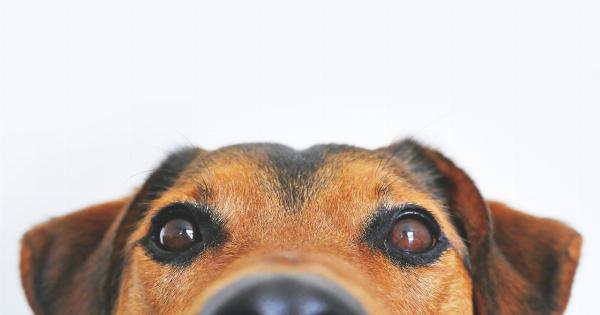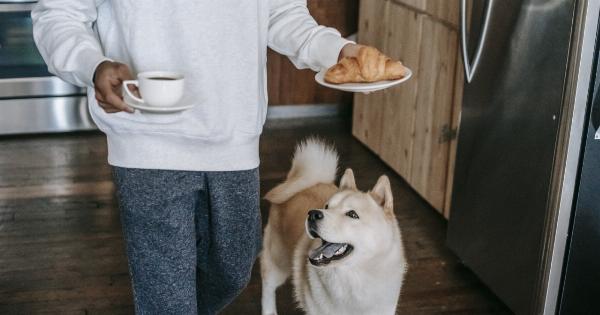Separation stress, also known as separation anxiety, is a common behavioral issue that many dogs experience. It occurs when dogs become distressed or anxious when separated from their human companions or left alone.
This condition can lead to various undesirable behaviors, such as excessive barking, destructive chewing, and even self-harm.
Causes of Separation Stress in Dogs
Several factors can contribute to the development of separation stress in dogs:.
Lack of Proper Socialization
Dogs that were not adequately socialized during their early stages of life may have difficulty coping with being alone.
Socialization involves exposing puppies to various experiences, people, and animals, which helps them develop confidence and reduce anxiety. A lack of socialization can make dogs more prone to separation stress later on.
Prior Traumatic Experiences
Dogs that have gone through traumatic or distressing events, such as being abandoned or experiencing mistreatment, are more likely to develop separation stress.
The fear and insecurity associated with past traumatic experiences can manifest when they are left alone.
Changes in Routine or Environment
Changes in a dog’s routine or living environment can trigger separation stress. Moving to a new home, changes in family dynamics, or the absence of a family member can all contribute to the development of this condition.
Dogs thrive on stability and routine, so any disruptions can cause anxiety and distress.
Owner Dependency
Dogs that are overly dependent on their owners may struggle with being left alone. If a dog becomes accustomed to constant human companionship and attention, the sudden absence of their owner can be a distressing experience.
Signs of Separation Stress
Recognizing the signs of separation stress in your dog is crucial in managing and addressing the issue. Some common signs include:.
Excessive Barking or Howling
Dogs with separation stress may bark excessively or howl when left alone. This is their way of vocalizing their distress and seeking attention.
Destructive Behavior
Chewing furniture, scratching doors or walls, or destroying household items are behaviors often displayed by dogs experiencing separation stress. This destructive behavior is a result of anxiety and an attempt to alleviate their distress.
Toileting Accidents
Dogs suffering from separation stress may have accidents indoors, even if they have been house-trained. This behavior is a reflection of their heightened anxiety and inability to control their bladder or bowels when alone.
Pacing or Restlessness
Restlessness, excessive pacing, and an inability to settle down are common signs of separation stress. Dogs may continuously move around the house, unable to relax or find comfort.
Escaping Attempts
In some cases, dogs may attempt to escape their confinement when faced with separation stress. They may scratch at doors or windows, chew through crates, or even jump over fences in an attempt to find their owners.
Preventing and Managing Separation Stress
If you suspect your dog is experiencing separation stress, there are several strategies to help prevent and manage the condition:.
Gradual Desensitization
Gradually desensitizing your dog to being alone can help reduce their anxiety. Start by leaving them alone for short periods and slowly increase the duration over time.
This helps your dog understand that being alone is not a permanent or stressful situation.
Positive Reinforcement Training
Train your dog to associate positive experiences with being alone. Reward them with treats, toys, or praise when they display calm behavior while alone. This helps create positive associations with solitude and reduces anxiety.
Proper Exercise and Mental Stimulation
Ensure your dog receives sufficient daily exercise and mental stimulation. Physical activity and mental challenges help reduce anxiety and tire your dog, making them more relaxed when left alone.
Establish a Safe Space
Create a designated area where your dog feels safe and secure when alone. Provide comfortable bedding, familiar toys, and items with your scent. This space can help alleviate anxiety and provide a sense of security.
Seek Professional Help
If your dog’s separation stress persists or escalates despite your efforts, it may be beneficial to consult a professional dog trainer or veterinary behaviorist.
They can provide tailored advice and potentially recommend medication or additional interventions to help manage the condition.
Conclusion
Understanding why dogs develop separation stress is essential for ensuring their well-being. By identifying the possible causes and recognizing the signs, you can take appropriate measures to prevent and manage separation anxiety in your furry friend.
Remember to approach the issue with patience, consistency, and plenty of positive reinforcement.





























